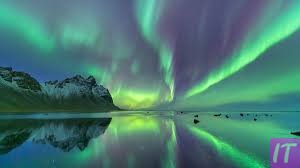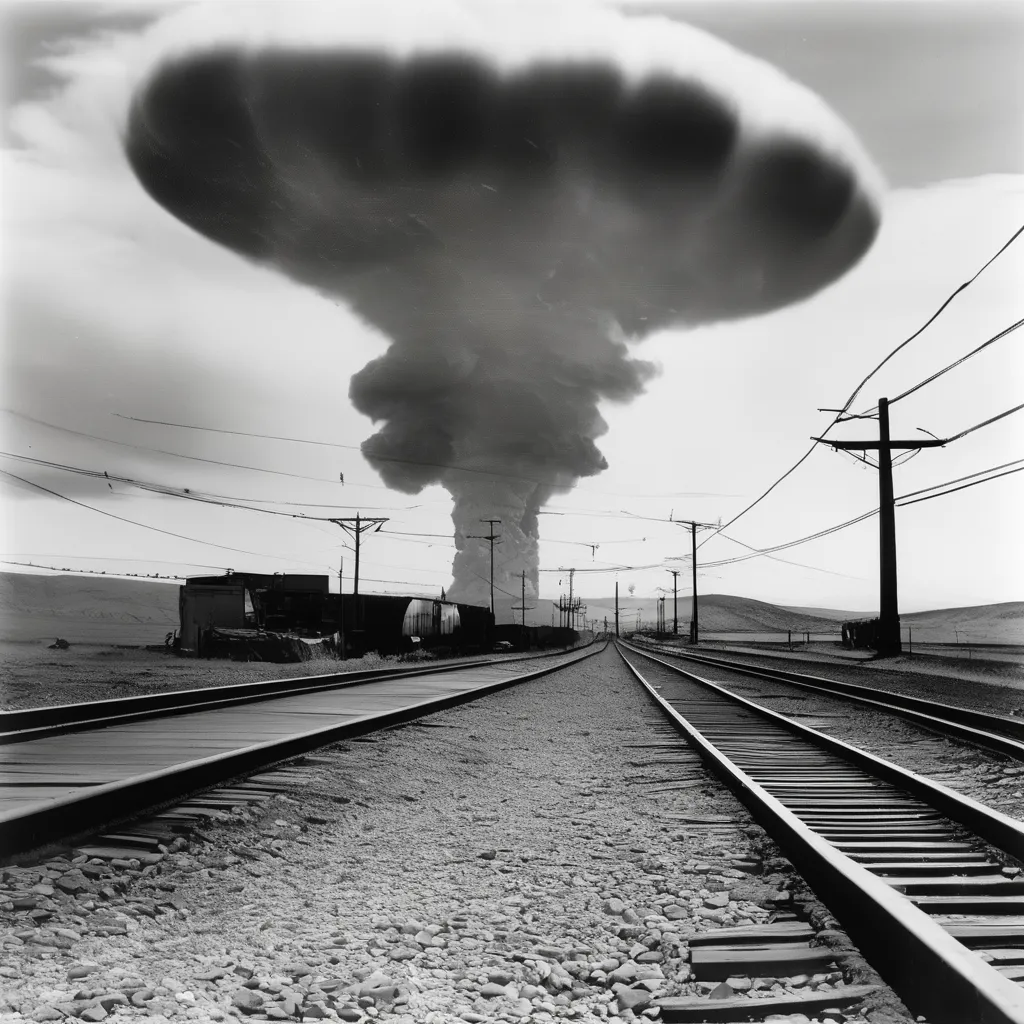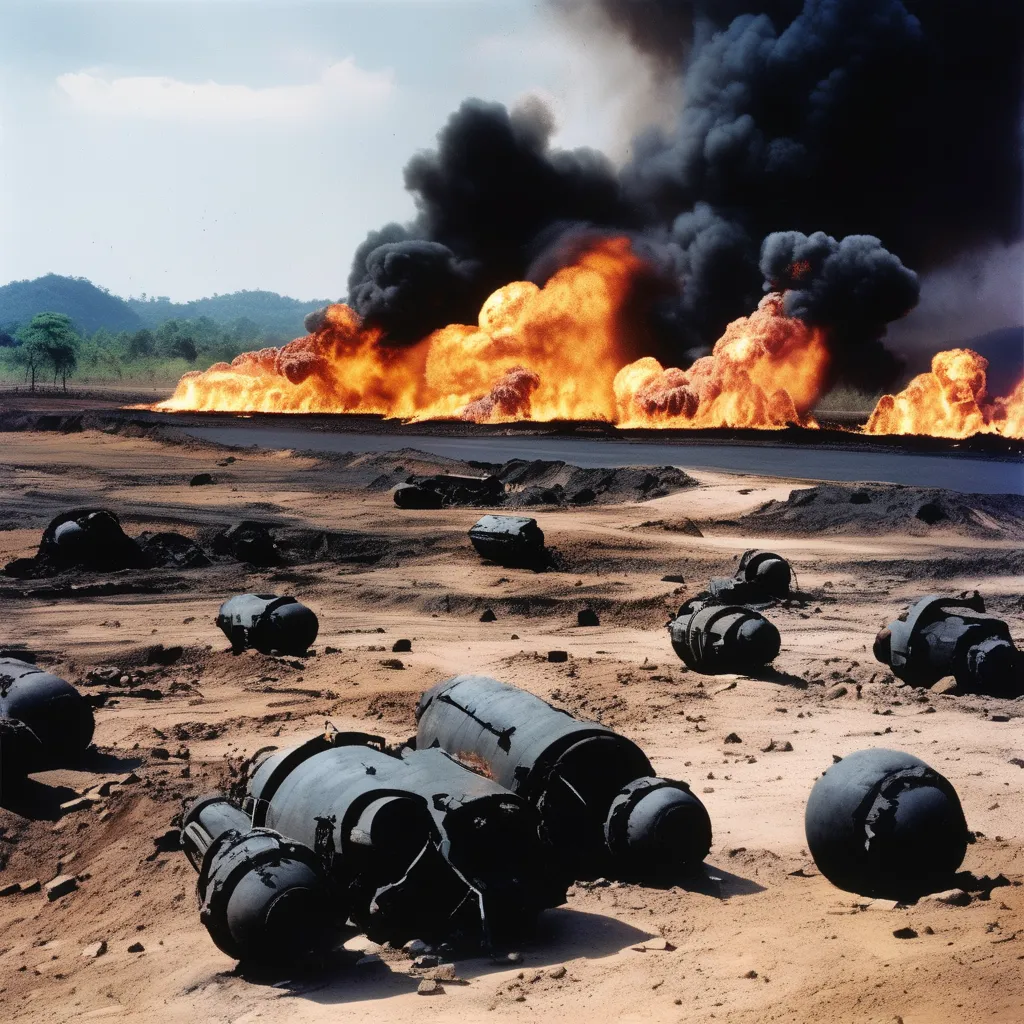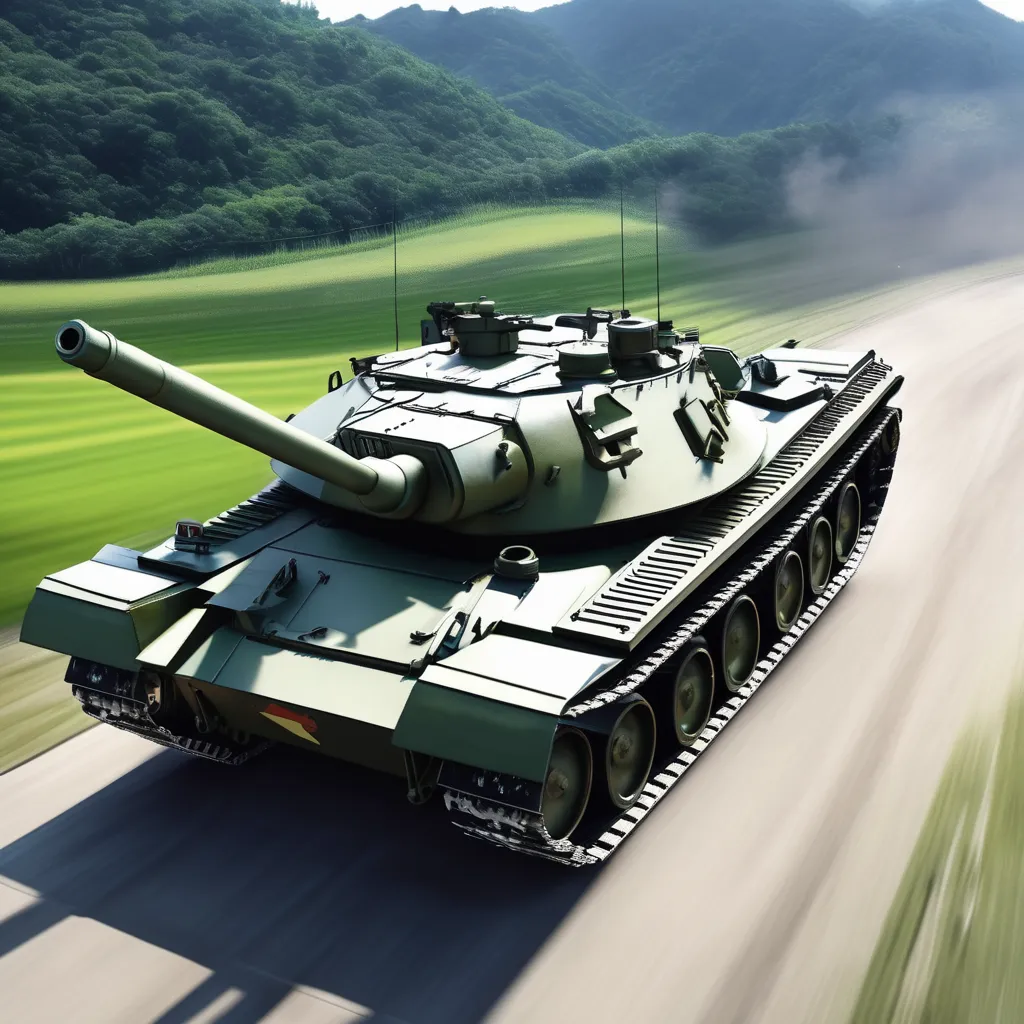ITEACH.TOP | LEARN EVERYTHING
Introduction to the Northern Lights
The Northern Lights, also known as the Aurora Borealis, are one of nature’s most mesmerizing displays. This ethereal phenomenon lights up the night skies with vibrant hues of green, pink, purple, and red, captivating spectators worldwide. Historically rooted in folklore and science, the Northern Lights have fascinated humanity for centuries. This article delves into various facets of this natural wonder, providing an in-depth understanding enriched by scientific and cultural perspectives.
The Science Behind the Northern Lights
The Northern Lights result from interactions between the Earth’s magnetosphere and charged particles from the solar wind. When these charged particles, predominantly electrons, and protons, collide with gases like oxygen and nitrogen in the Earth’s atmosphere, they emit light. This process, known as ionization, occurs predominantly in the polar regions due to the shape and orientation of Earth’s magnetic field.
Ionization happens at altitudes ranging from 50 miles to over 400 miles above the Earth. The energy released during these collisions manifests as visible light. The colors observed depend on the type of gas involved and the altitude of the reaction. For instance, oxygen at high altitudes generates red auroras, while at lower altitudes, it produces green lights.
Apart from the visual spectacle, the Northern Lights also generate radio waves. These are often referred to as auroral kilometric radiation. Advanced satellites and ground-based observatories capture and study these waves to gain insights into space weather and solar activity.
History and Mythology of the Northern Lights
Different cultures have various myths and stories about the Northern Lights. The Vikings, for example, believed the lights were reflections from the shields of the Valkyries, warrior maidens serving the god Odin. In Inuit cultures, the Aurora Borealis was thought to be the spirits of deceased ancestors playing celestial games.
Ancient Greeks and Romans also had their interpretations. The Romans associated the lights with “Aurora,” the goddess of dawn, believing that she raced across the sky in her chariot to alert her brother Helios, the sun, of approaching dawn. Similarly, the Greeks thought the lights were a phenomenon involving Eos, their dawn goddess.
Indigenous tribes in North America had various interpretations of the lights too. Some viewed them as the spirits of animals they hunted, such as deer and salmon. Others believed the auroras were a bridge between the physical and spiritual worlds, helping souls transition into the afterlife.
Geographical Regions to Witness the Northern Lights
The phenomenon of Northern Lights is mostly visible within the Arctic Circle, occurring in countries such as Norway, Sweden, Finland, Iceland, Canada, and parts of Russia. These regions benefit from prolonged periods of darkness during the winter months, providing ideal conditions for aurora sightings.
Norway’s Tromsø, often dubbed the ‘Gateway to the Arctic,’ offers one of the best vantage points. Its latitude and relatively mild Gulf Stream-influenced climate make it a prime spot for aurora hunters. Similarly, Finnish Lapland, especially areas around Rovaniemi, provides excellent opportunities for viewing the Northern Lights, along with an authentic Arctic experience.
Iceland is another popular destination for aurora chasers. Its dark, clear skies away from urban light pollution present optimal conditions. Towns like Akureyri and the Westfjords region are often recommended for those seeking a silent commune with this natural wonder.
Optimal Times of Year to See the Northern Lights
The best time to witness the Northern Lights is during the winter months, from late September to early April. During this period, the nights are longer and darker, increasing the chances of observing a more vivid aurora display. The equinox months of September and March are particularly notable as Earth’s geomagnetic activity is at its peak.
Clear skies are essential for a good view. Therefore, it’s crucial to keep an eye on weather forecasts and choose nights with little to no cloud cover. The absence of moonlight also significantly enhances visibility, highlighting the contrast between the aurora and the night sky.
Peak auroral activity typically occurs between late evening and early morning hours, specifically from 10 PM to 2 AM. Patience is key, as sometimes waiting for hours might be necessary to catch even a fleeting glimpse of the lights.
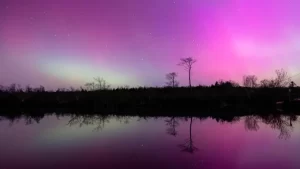
Different Colors of the Northern Lights Explained
The Northern Lights display a spectrum of colors due to the type of gas particles involved and the altitude at which they collide with solar particles. The most common aurora color is green, which occurs when solar particles interact with oxygen at altitudes of 60 to 150 miles.
Red auroras are less frequent but occur when oxygen at higher altitudes, above 150 miles, gets excited. These upper-atmospheric reactions tend to be rarer yet visually spectacular. Nitrogen contributes to blue and purplish-red auroras. The blue lights appear at altitudes below 60 miles, while purples or violets appear above this level.
Though rarer, yellow and pink auroras can also be observed. These hues often result from the mixing of red and green or blue and pink colors due to varied altitudinal interactions of solar particles with atmospheric gases. Every aurora display is unique, shaped by a complex interplay of solar and atmospheric conditions.
How Solar Activity Affects the Northern Lights
Solar activity significantly influences the intensity and frequency of the Northern Lights. The sun undergoes an 11-year cycle of solar activity, marked by periods of maximum and minimum solar activities. During solar maximum, sunspots and solar flares are more frequent, releasing greater amounts of electrically charged particles into space, which eventually reach Earth.
When a solar storm or coronal mass ejection (CME) heads towards Earth, it can trigger intense auroras. These events result in what scientists term ‘auroral storms,’ where the night sky can light up more vividly than usual, sometimes being visible at lower latitudes that don’t typically experience Northern Lights.
Space weather monitoring agencies, like NASA and the NOAA, track solar activity and provide real-time updates on potential auroral displays. These predictions help aurora enthusiasts plan their viewing experiences more effectively, ensuring they are in prime locations during periods of peak activity.
Photographic Techniques for Capturing the Northern Lights
Capturing the Northern Lights on camera requires specific photographic techniques to translate their grandeur accurately. A good starting point is using a DSLR or mirrorless camera equipped with a wide-angle lens. Wide apertures (f/2.8 or lower) allow maximum light entry, crucial for night photography.
Setting the ISO between 800 and 3200, depending on the camera’s sensor capability, helps in capturing the faint light. Shutter speeds should be experimented with, typically ranging from a few seconds to even 30 seconds, depending on the brightness and speed of the auroral movement.
Using a tripod is indispensable for stabilizing the camera during long exposures. Additionally, using a remote shutter release or the camera’s timer function minimizes shake. Post-processing software can further enhance captured images, adjusting exposure, contrast, and sharpness, ensuring the final result aligns with the awe-inspiring spectacle witnessed.
The Culture and Traditions Associated with the Northern Lights
The Northern Lights play a crucial role in the cultural and spiritual lives of communities living in the polar regions. For the Sámi people of Northern Scandinavia, the auroras are imbued with spiritual significance. They have numerous stories and traditions linked to the lights, viewing them as a dance of departed souls or animal spirits.
In Iceland, the Northern Lights are said to provide comfort and guidance. Historical accounts suggest that pregnant women were advised not to look directly at the lights to avoid giving birth to cross-eyed children, a belief showcasing the integration of auroral phenomena into everyday life practices.
In North American Indigenous cultures, the auroras are often seen as ancestral spirits. They form a part of rituals and storytelling sessions, preserving ancient wisdom and beliefs. Modern cultural practices, such as aurora-themed festivals in places like Yellowknife, Canada, continue to celebrate and honor this magnificent natural phenomenon.
The Impact of Climate Change on the Northern Lights
Climate change has far-reaching consequences on various natural phenomena, including the Northern Lights. While the phenomena itself are driven primarily by solar and geomagnetic activities, changes in atmospheric conditions may influence visibility. Increasing cloud cover, a side effect of climate change, can obstruct auroral displays, affecting their observation.
Thermal variations in the Earth’s atmosphere might also affect the altitude at which auroras occur, potentially altering their appearance and intensity. Warmer temperatures can lead to unpredictable weather patterns, affecting the consistency of clear, dark skies necessary for optimal aurora viewing.
Climate change also impacts the ecosystems and communities in the Arctic regions, indirectly affecting aurora tourism and research activities. Addressing climate change is thus essential not only for environmental and societal well-being but also for preserving the natural spectacle of the Northern Lights for future generations.
Tours and Excursions for Experiencing the Northern Lights
Several tour operators offer specialized Northern Lights excursions, combining the thrill of aurora hunting with unique cultural and outdoor experiences. Norway, Finland, and Iceland lead the way in providing organized tours tailored to maximize aurora sightings. These tours often include expert guides knowledgeable about local weather patterns and optimal viewing spots.
Activities such as dog sledding, ice fishing, and reindeer safaris are often bundled with aurora trips, offering a comprehensive Arctic experience. Luxury tour options may feature stays in glass igloos or heated tents, allowing guests to watch the lights from the comfort of their accommodations.
Canada’s Yukon Territory and Alaska also offer a plethora of guided trips. From snowmobile excursions to cozy lodge stays complete with educational sessions on aurora science, these tours cater to various interests and budgets, ensuring an unforgettable Northern Lights adventure.
The Role of Magnetic Fields in the Creation of Northern Lights
The Earth’s magnetic field, or magnetosphere, plays a critical role in the formation of the Northern Lights. As charged solar particles approach Earth, they are funnelled toward the polar regions by the magnetosphere. This interaction directs the solar wind particles toward the upper atmosphere, where they collide with gases and produce the auroral light show.
The magnetosphere’s strength and configuration influence the intensity and latitude range of auroral displays. During periods of heightened solar activity, more charged particles enter the magnetosphere, enhancing the auroral activity and sometimes making the lights visible at lower latitudes.
Geomagnetic storms, caused by significant solar wind disturbances, can dramatically boost auroral activity. These storms compress Earth’s magnetic field, pushing the interaction zones closer to the equator and resulting in more expansive and vibrant auroral displays.
Differences Between Northern Lights and Southern Lights
While the Northern Lights are known as Aurora Borealis, their southern counterpart is called Aurora Australis. Despite their different geographical locations, the scientific principles behind their formation are identical, driven by the interaction of solar particles with Earth’s magnetosphere.
Aurora Australis is visible in the southern polar regions, specifically in places like Antarctica, Tasmania, and southern parts of New Zealand. Given the remoteness and inaccessibility of the Antarctic region, Aurora Australis is less commonly observed than its northern counterpart.
Additionally, the Southern Hemisphere has fewer landmasses at high latitudes, limiting the potential viewing locations for the Aurora Australis. Nonetheless, for those who venture to these remote locations, the experience of witnessing the Southern Lights is equally rewarding and majestic.
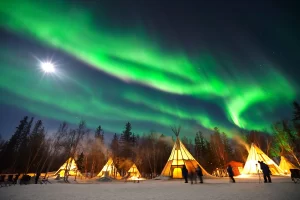
Famous Spots for Viewing the Northern Lights in Scandinavia
Scandinavia offers some of the finest locations for viewing the Northern Lights. Tromsø in Norway is a favorite among aurora enthusiasts. Its location within the Arctic Circle and relatively mild coastal climate provide excellent conditions for aurora sightings. The surrounding fjords and mountains add to the scenic beauty, making it a captivating experience.
Sweden’s Abisko National Park is renowned for its clear skies and minimal light pollution, providing ideal conditions for auroral viewing. The park’s unique ‘blue hole,’ a patch of sky often free of clouds, offers enhanced opportunities for witnessing the lights.
Finnish Lapland, particularly areas around Rovaniemi and Kemi, is another prime destination. Glass igloos and aurora cabins in this region provide a comfortable and unique way to watch the Northern Lights. The combination of pristine wilderness, cultural heritage, and auroral phenomena makes Scandinavia a top choice for aurora chasers.
The Effect of Urban Light Pollution on Northern Lights Viewing
Urban light pollution can significantly impact the visibility of the Northern Lights. Artificial lights from street lamps, buildings, and vehicles create a bright skyglow that diminishes the contrast needed to observe faint auroras. This light interference makes it challenging to see and photograph the Northern Lights clearly.
To counteract light pollution, it’s advisable to travel to areas with minimal artificial lighting. National parks, remote villages, and wilderness areas far from city lights offer the best conditions for aurora viewing. Even within urban areas, finding elevated spots or using local apps to locate dark sky parks can improve the chances of seeing the lights.
Efforts are underway in many regions to mitigate light pollution through initiatives like ‘Dark Sky Parks’ and community lighting regulations. By adopting more energy-efficient and downward-facing lights, these measures help preserve night skies and enhance the natural spectacle of the Northern Lights.
Technological Advances in Predicting Northern Lights Activity
Recent technological advances have significantly improved the accuracy of predicting Northern Lights activity. Space weather monitoring satellites, such as NASA’s Solar and Heliospheric Observatory (SOHO), continuously observe solar activity, providing real-time data on solar flares and coronal mass ejections.
Ground-based magnetometers measure variations in Earth’s magnetic field, correlating these fluctuations with auroral activity. This data, along with atmospheric observations, feeds into sophisticated models that forecast auroral activity levels and their potential visibility.
Aurora forecast apps and websites use this data to provide timely updates, maps, and alerts for aurora chasers. These technological tools enhance the anticipation and excitement of auroral hunting, enabling enthusiasts to plan their trips more effectively and increasing the likelihood of witnessing this extraordinary phenomenon.
Ecotourism and the Northern Lights
Ecotourism is emerging as a sustainable approach to experiencing the Northern Lights. This travel model emphasizes low-impact, environmentally friendly practices that respect local cultures and natural habitats. Aurora-based ecotourism initiatives focus on minimizing carbon footprints by using renewable energy sources and promoting conservation efforts.
Responsible aurora tours may include educational components that raise awareness about the region’s ecology, the science of auroras, and the importance of sustainable practices. Collaborations with local communities ensure that tourism benefits the economy while preserving cultural heritage.
By choosing ecotourism options, travelers can enjoy the marvel of the Northern Lights in a way that supports conservation and fosters sustainable interactions with these pristine Arctic environments.
Safety Tips for Viewing the Northern Lights in Remote Areas
When venturing into remote areas to view the Northern Lights, safety should be a top priority. Harsh weather conditions, extreme cold, and isolated locations can pose significant risks. Dressing in layered, insulated clothing and carrying essential survival gear like GPS devices, first aid kits, and emergency shelters are crucial.
It’s advisable to inform someone about your travel plans and expected return time, especially if exploring remote or wilderness areas. Local guides and organized tours often provide added safety, as they are familiar with the terrain and potential hazards.
Being mindful of wildlife and respecting natural habitats is equally important. Practicing Leave No Trace principles ensures that your aurora viewing experience does not negatively impact the environment or local wildlife.
The Northern Lights in Art and Literature
The Northern Lights have inspired countless works of art and literature. From ancient cave paintings to contemporary photography, artists have been captivated by the ethereal beauty of this natural phenomenon. The use of vibrant colors, dynamic shapes, and sweeping vistas symbolizes the awe and wonder the auroras evoke.
In literature, the Northern Lights feature prominently in myths, legends, and modern narratives. Jules Verne’s “Journey to the Center of the Earth” describes the auroras as magical phenomena guiding adventurers. Philip Pullman’s “His Dark Materials” trilogy weaves auroras into its fantastical world, depicting them as gateways to other dimensions.
Whether through visual arts, poetry, or prose, the Northern Lights continue to inspire creative expression, highlighting their profound impact on human imagination and culture.
Future Research and Exploration of the Northern Lights
Ongoing research on the Northern Lights seeks to unravel the complexities of this mesmerizing phenomenon further. Future exploration aims to deepen our understanding of the interactions between solar particles and Earth’s magnetosphere, with a focus on predicting space weather events more accurately.
Advancements in satellite technology will enable more comprehensive monitoring of solar activity, improving aurora forecasts and enhancing preparedness for geomagnetic storms. Collaborative international research efforts, such as the International Space Weather Initiative, contribute valuable data and insights into auroral science.
Additionally, interdisciplinary studies exploring the cultural, environmental, and socioeconomic aspects of the Northern Lights will enrich our knowledge and appreciation of this natural wonder. As technology and scientific understanding advance, our fascination with the Northern Lights is set to grow even further, illuminating new avenues of discovery and exploration.
Conclusion
The Northern Lights stand as one of nature’s most awe-inspiring spectacles, captivating the imagination of cultures around the world and providing a unique intersection of science, art, and spirituality. From understanding the intricate solar and atmospheric processes that create them to exploring their rich presence in cultural traditions and modern art, the Northern Lights offer a profound and multifaceted experience. Whether you’re a seasoned aurora chaser or a curious observer, this natural phenomenon invites you into a luminous world of wonder and discovery.
